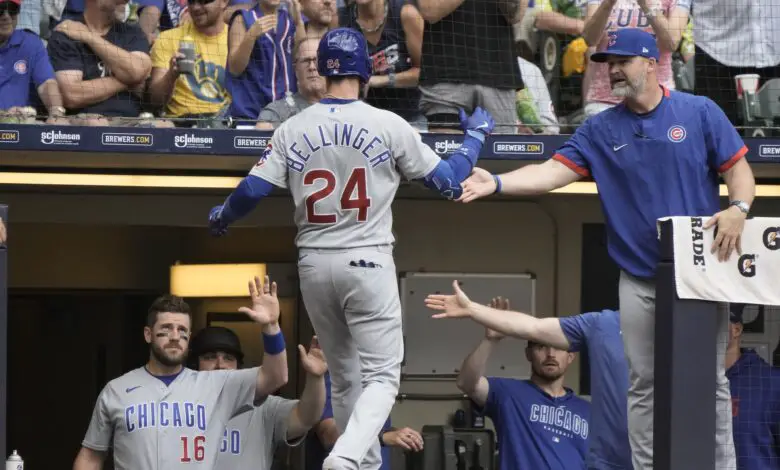
Quantifying Hope: Cubs’ Odds Drop to 9%, Selling at Deadline Still Not Foregone Conclusion
This is the first installment of QH in three weeks and I was contemplating skipping it until a flood of inquiries came in demanding to know how the Cubs’ odds had shifted. Or, you know, that didn’t actually happen because no one’s really concerned about the postseason right now. Things were actually looking pretty good on June 24, when they rose to 25.3% playoff probability on the strength of their win in London.
That was their highest mark since May 12 (27.6%) and it actually pushed the Cubs ahead of the Reds momentarily. Since then, however, the Cubs have plummeted to 9.0% while Cincy has jumped to 40.9% behind a very exciting brand of baseball that has become the envy of the division.

Jed Hoyer is still clinging to hope that his team will give him a reason to buy at the deadline, both because he’s a competitive person who wants to win and because ownership needs to generate more revenue. You can keep banging the drum and repeating that Tom Ricketts just wants to be cheap, but the dude really needs to have something to drive fans to hang out in his sportsbook and subscribe to the forthcoming Marquee standalone.
That ain’t happening if everyone is traded off at the deadline and the team stumbles to a 70-win season. Of course, even the increasing likelihood of another futile season doesn’t necessarily mean the Cubs are just going to trade everyone. The common refrain about being better off getting prospects for players whose contracts are expiring ignores the reality of roster limits and organizational needs.
Look at what happened, or didn’t, with Willson Contreras last year. The Cubs actually had a deal with the Astros before Dusty Baker scuttled it, but Hoyer spoke openly about how they had to find the right value. Because clubs are limited to just 180 minor league players (190 in the offseason), it’s not as simple as getting three prospects for Marcus Stroman or Cody Bellinger — both of whom are now having to address trade rumors — and calling it a win.
Not only do those prospects need to provide greater relative value than the big league players they’re swapped for, but they also need to be better than the minor leaguers they’ll displace. In this regard, real baseball is very similar to fantasy baseball in that you can’t just accept a 3-for-1 trade based purely on quantity. That becomes even more clear when you’re talking about moving several players, which is why the Cubs really only made 1-for-1 moves involving pitchers last season.
Say Hoyer was to flip Stroman, Bellinger, Kyle Hendricks, and another member of the active roster ahead of the deadline in exchange for like seven prospects. That would also mean having to let go of three current minor leaguers, thus washing out some of the potential future value he had just acquired. Now, it’s also possible that Hoyer could try to limit his haul like when the Cubs got Pete Crow-Armstrong in exchange for Javier Baez and Trevor Williams.
It’ll be a while yet before we know for certain what the organization is going to do, but it’s not as simple as selling everything if they don’t string together a bunch of wins here.

